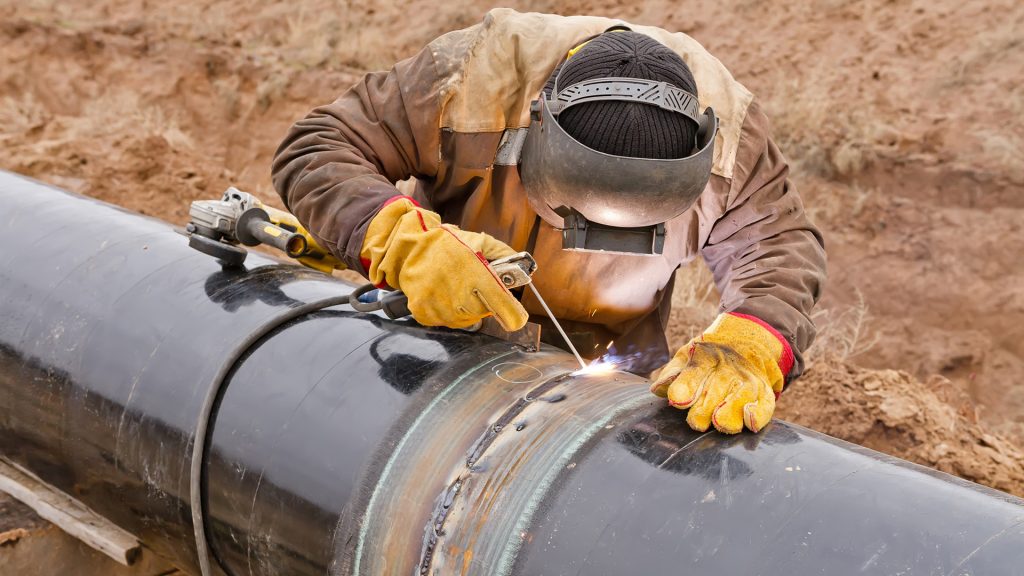Energy affects nearly every aspect of our daily lives: the clothes we wear, the cars we drive, the shampoo we use, the carpet we walk on, the lights we turn on, the medication we take, and the heat for our homes in the cold of winter.
Pipelines are critical to safely, efficiently and cost-effectively transport energy – oil and natural gas – from where it is produced to where American families and small businesses need it.

Simply put, we all need electricity. Increasingly electricity is supplied by natural gas. Natural gas must have pipelines to reach our homes and businesses. And, as we use more natural gas, we will need more pipelines.
In the United States, there are approximately 2.6 million miles of pipelines.((Pipelines for America, “Safety,” https://consumerenergyalliance.org/pipelines-for-america/pipelines/safety/.))
Pipelines may often be unseen, but their absence would create major problems for our families and small businesses. Recently, Consumer Energy Alliance released a report that analyzed the consequences of denying new pipeline infrastructure to meet the nation’s and economy’s basic energy demands.
((Consumer Energy Alliance, “Families, Communities and Finances: The Consequences of Denying Critical Pipeline Infrastructure,” 2017, https://consumerenergyalliance.org/cms/wp-content/uploads/2017/01/CEA_Pipelines_Report-011617.pdf.)) Doing so would yield devastating results, including a shortfall of one-third of the electricity generation needs from the overall U.S. electricity market – or the energy needed to power every home and business in 12 states.
((Ibid.)) Those in poverty would be disproportionately affected, as the price of electricity would increase substantially.((Ibid.)) Nearly every good and service in the U.S. would increase in costs due to increased electricity, transportation fuel, and utility costs.((Ibid.))

Eliminating new pipeline development would also further increase safety issues caused by the use of alternative transportation methods.((Ibid.)) Currently, 99.99% of all petroleum and natural gas products safely reach their destination via pipelines,((Pipelines for America, “Safety,” https://consumerenergyalliance.org/pipelines-for-america/pipelines/safety/.)) and moving oil and gas by pipeline is 4.5 times safer than moving the same volume the same distance by rail. Pipelines are designed with safety technologies to quickly stop accidents if they occur,((Kenneth P. Green & Taylor Jackson, “Safety in the Transportation of Oil and Gas: Pipelines or Rail?,” Frasier Research Institute, August 2015,
https://www.fraserinstitute.org/sites/default/files/safety-in-the-transportation-of-oil-and-gas-pipelines-or-rail-rev2.pdf.)) with estimates indicating that operators spend $2.2 billion annually to ensure pipelines remain safe.((Association of Oil Pipe Lines, “Pipeline Issues Series: Safety Record,” http://www.aopl.org/wp-content/uploads/2015/10/Safety-Record-Pipeline-Issues-Series.pdf))
Additionally, without access to domestically produced energy, American families and small businesses would have their energy security reduced due to increased reliance on imported energy.((Consumer Energy Alliance, “Families, Communities and Finances: The Consequences of Denying Critical Pipeline Infrastructure,” 2017, https://consumerenergyalliance.org/cms/wp-content/uploads/2017/01/CEA_Pipelines_Report-011617.pdf.)) Shutting off new petroleum pipelines is equivalent to stranding a daily crude oil supply that is nearly equal to all of the oil the U.S. imported on a daily basis from OPEC and Russia in 2015.((Ibid.))
Finally, preventing pipeline development would result in job losses for thousands of Americans in the manufacturing, energy, transportation, mining, and agricultural industries.((Ibid.))
